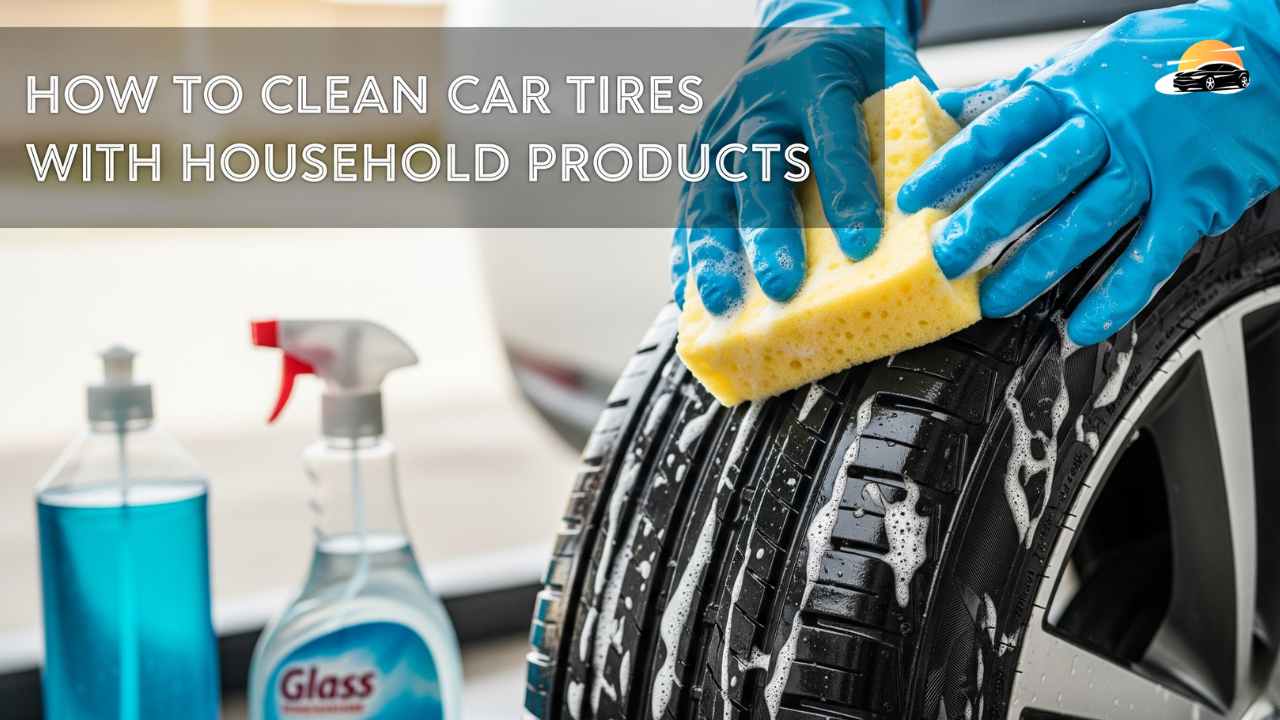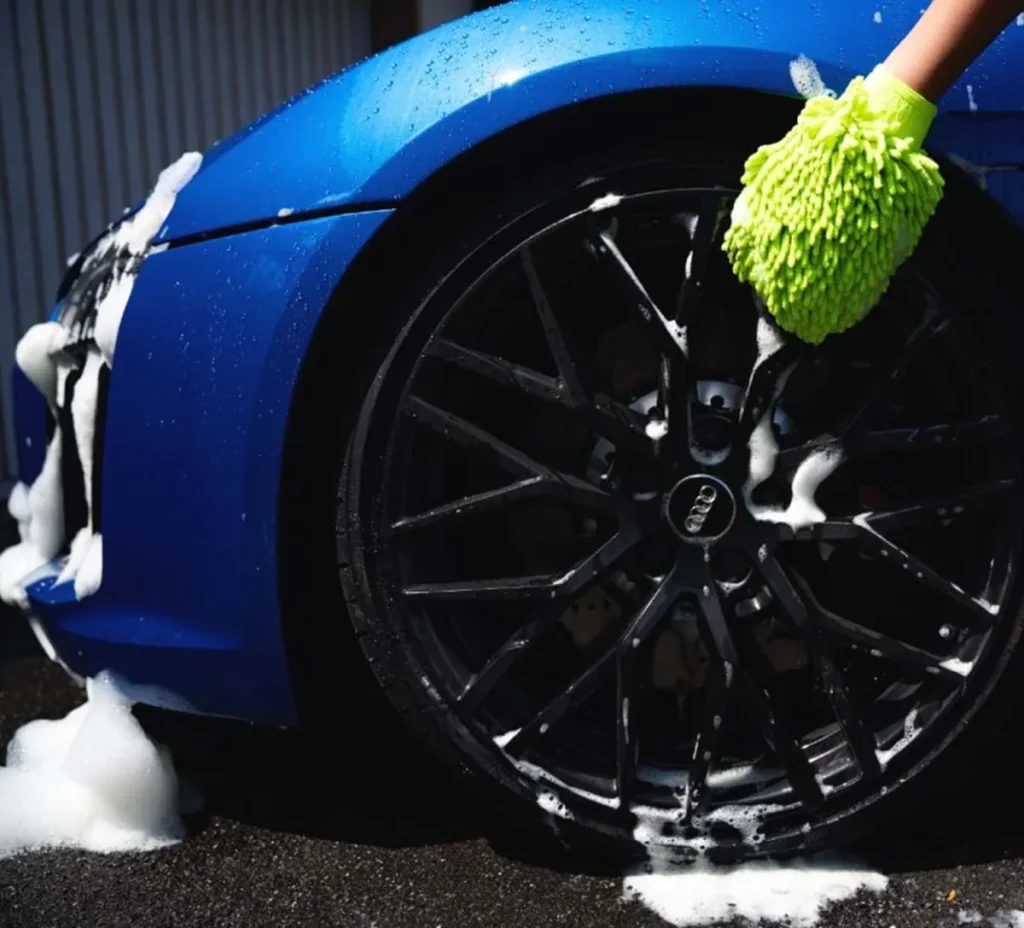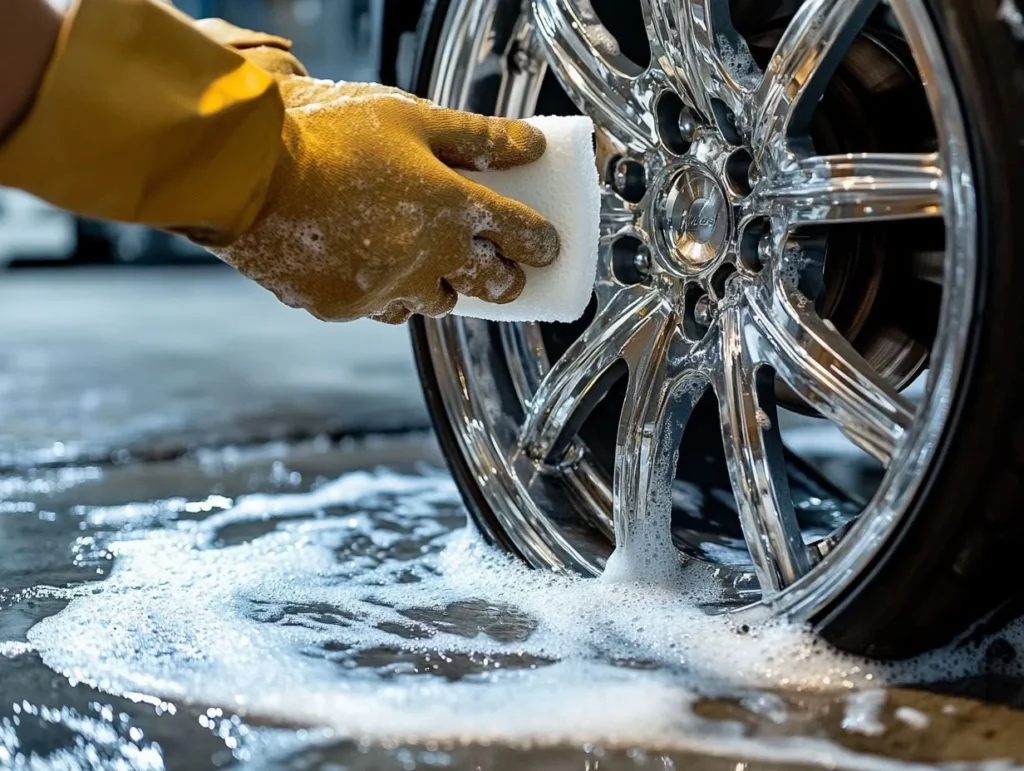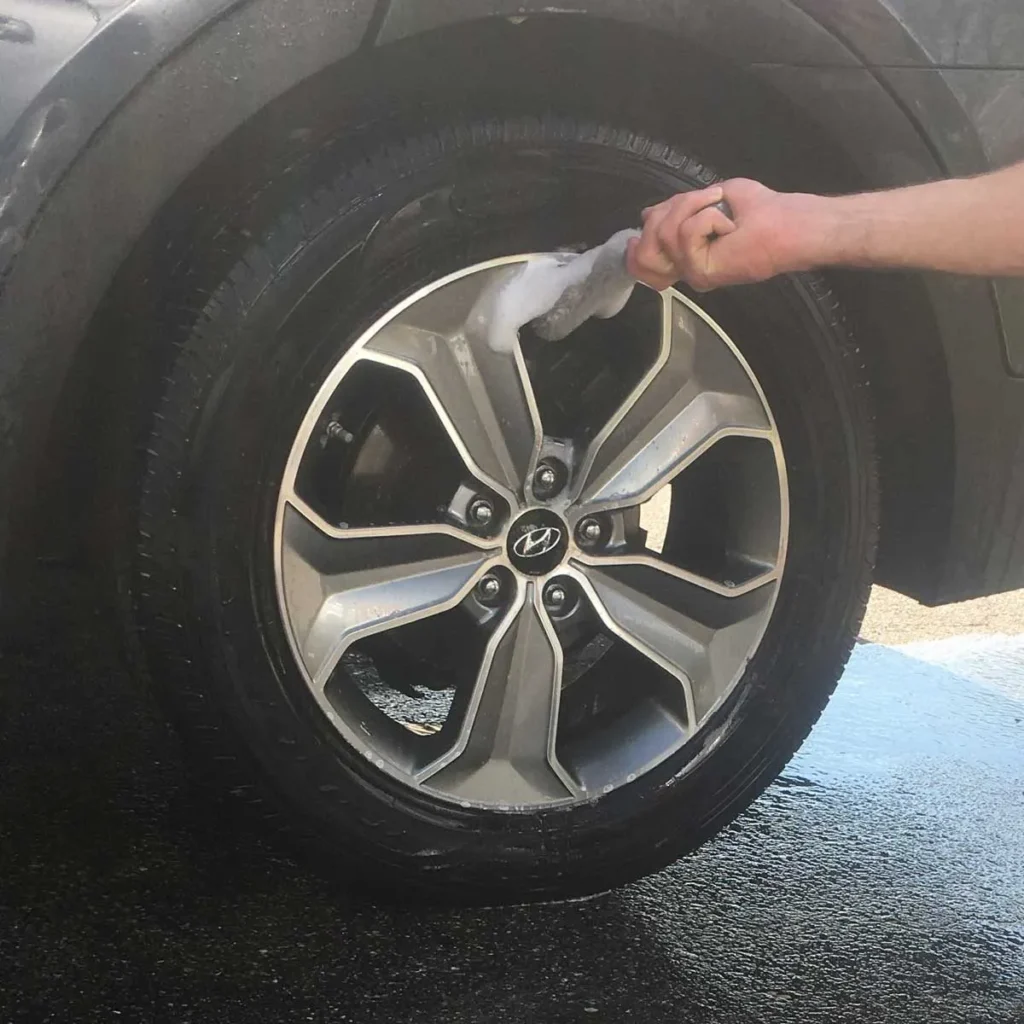How to Clean Car Tires with Household Products: Your Easy Guide For Car Décor Push Signals Changing Consumer Habits
Consumer Reports recently published a survey showing 72% of vehicle owners wash their cars at home at least once a month. Yet here’s the kicker: most say they “don’t know the right way” to clean their tires. At the same time, tire care revenue for companies like Goodyear has been dipping. Goodyear, one of the largest tire manufacturers in the world, saw its tire-related services revenue fall by nearly 6% last quarter as more consumers skipped dealer cleanings in favor of DIY fixes.
The debate is simple but surprisingly loud: Should you really spend $30–$50 on branded tire cleaners when vinegar, baking soda, or dish soap are sitting in your kitchen pantry? The household-method trend is catching steam online, and it could quietly reshape a corner of the car care industry. Investors watch companies like Goodyear and Michelin because if consumers continue the homegrown approach, it doesn’t just dent product sales. It changes perceptions of brand necessity.
This is not just about shiny wheels. It’s about consumer empowerment versus corporate upsell. Drivers care about price, safety, and appearance. Companies care about service margins. Something has to give.
The Data
Market signals are messy, but they tell us something. According to IBISWorld, the U.S. car wash and detailing industry hit $14.7 billion in annual revenue in 2024. Within that, chemical sales (tire shine, wheel cleaner, protectants) made up an estimated $475 million. That’s not huge—but it’s sticky recurring spend.
Yet here’s the strange part… Amazon search data shows “DIY tire cleaner” queries grew 18% in the past year, and TikTok cleaning hacks have generated more than 250 million views under hashtags like #tirecleaningtips. The shift is cultural as much as economic. If consumers realize baking soda plus warm water works “good enough,” why buy the $12 spray bottle of Tire Shine X?
For Goodyear, this isn’t trivial. Though the company is primarily a tire manufacturer, service upselling—including branded cleaning kits—contributes to per-customer revenue. A 5% slip in ancillary product spend can translate to tens of millions in earnings loss annually, according to internal research analysts cited in Automotive News.
So the math goes like this: rising inflation + household hacks = downward pressure on after-market profit. The household product playbook isn’t just a fad—it’s economics at work.
Why Bother Cleaning Tires with Regular Household Stuff?
Here’s the thing: those glossy bottles at the auto shop look convincing, but do you really need them? Probably not. A lot of the same products you trust in your kitchen or laundry room can do the job for less. Let’s break it down.
You save real money. Tire sprays aren’t cheap, and some are basically soap in a fancy bottle. Using what you already have at home keeps cash where it belongs in your pocket.
Kinder to your tires (and the planet). Many store-bought cleaners lean heavily on harsh chemicals. That “fresh shine” often hides ingredients tough on rubber and unfriendly to runoff water. Household cleaners? Milder, safer, less drama.
No special runs to the store. Odds are, you’ve got dish soap, baking soda, or vinegar within arm’s reach already. Convenience matters.
Transparency. When you mix your own, you know exactly what’s touching the rubber. No mystery formulas trying to sound greener than they are. (This smells like marketing spin, honestly.)
Gathering Your DIY Tire Arsenal
Think of it like prepping for cooking, except instead of a cake, you’re baking up cleaner tires.
Basic Supplies You’ll Need:
Two Buckets. Soap water in one, clean rinse water in the other.
Water. Obvious, but still the main workhorse here.
Mild Dish Soap. Cuts greasy grime without eating rubber.
Baking Soda. A gentle scrub—like sandpaper’s kinder cousin.
White Vinegar (careful with it!). Diluted properly, it tackles stubborn spots. Don’t go overboard, though.
Sponges or Soft Cloths. For wiping and spreading. Microfiber rags are great if you’ve got them.
A Firm Brush (non-metal). Old veggie scrubbers or plastic bristles are perfect. Metal brushes? Hard no—they’ll scratch.
Spray Bottle (optional). If you’re into easy spritzing instead of pouring.
Old Towels. For drying everything down when you’re done.
Optional: A Touch of Shine
This is where people go overboard. If you must add that showroom gloss, a minuscule amount of lemon oil or even cooking oil mixed with water can give a softer sheen. Key word: minuscule. Too much oil = sticky tires that attract dirt like a magnet. Sources say some folks skip this step entirely, and honestly? That’s not a bad call.
7 Surprisingly Simple Steps to Clean and Protect Your Tires at Home
Here’s the thing: tires don’t actually need a $20 “miracle shine” spray to look good. What they really need is basic care and a little attention to detail. Below is a straightforward process you can do with stuff you already have at home. No gimmicks, no glossy marketing promises.
Step 1. Rinse Off the Obvious Grime
Grab a hose (or just a bucket of clean water, it works just as well). Give your tires a solid rinse to knock off mud, dust, and chunky dirt. Think of it as a quick pre-wash like rinsing dishes before putting them in the dishwasher.
Step 2. Mix Up a Real-World Cleaner
Here’s where hacks meet reality. Not all dirt is created equal, so you have two DIY options:
Every day, clean: A little dish soap + warm water. Stir until it suds. (Sources say around two tablespoons is enough, but honestly, eyeballing works just fine.)
Stubborn build-up: Make a baking soda paste with water, toothpaste-thick. It scrubs really well and costs pennies.
Oily mess (go gentle): A 50/50 vinegar-water mix in a spray bottle. Warning: this works, but vinegar can be harsh on certain wheel finishes. Test a hidden patch before going full tilt.
This smells like one of those too-good-to-be-true tips, but it’s actually solid chemistry.
Step 3. Scrub Like It Matters
Dip a stiff brush (or sponge if you’re protective) in your chosen cleaner. Work the tire’s sidewalls, including around the raised lettering where dirt hides. If it’s hot out, finish one wheel before moving to the next—soap drying mid-scrub causes streaks.
Step 4. Don’t Neglect the Wheels
Clean tires with filthy wheels? That’s like a sharp suit with muddy shoes. Stick with the milder soapy mix here, plus a soft cloth or sponge. Focus on the lug nuts and spokes. And if you used vinegar earlier, avoid flooding the wheel surface—many modern alloys don’t love the acid.
Step 5. Rinse. Rinse Again.
This step gets skipped far too often. Flush each wheel thoroughly with fresh water until no soap or baking soda residue hangs around. Leftover cleaner doesn’t just look bad—it can actually attract dirt faster.
Step 6. Dry Like You Mean It
Grab an old towel and pat everything dry. Not only does this prevent water spots on metal, but it also shows you any places you missed. Plus, drying keeps corrosion-prone areas safer.
Step 7. The Optional “Shine Trick”
Look, clean black rubber already looks sharp. But if you want a touch more gloss without chemical-heavy sprays, dab a cloth with a tiny bit of lemon water or diluted cooking oil and buff it in. Tiny is the keyword here—too much oil makes tires slippery and sticky, which nobody wants.
Smart Tips for Cleaning Your Tires at Home
Cleaning your tires sounds simple: bucket, brush, done. But here’s the thing: the wrong approach can actually damage the rubber or leave you with a streaky mess that looks worse than before. To keep your wheels looking sharp without causing hidden problems, here are the main things to know.
The Do List
Test first, always. Try your homemade cleaner on a small, hidden patch. You want to see if it stains or strips before committing. (Yes, one experiment now beats weeks of regret later.)
Work on cool tires. Hot rubber doesn’t mix well with cleaners. Heat can make solutions evaporate too fast, leaving odd marks.
Protect your hands. Rubber gloves aren’t just for show. Vinegar or other mild acids can irritate skin, ask anyone who got lazy once.
Stay out of direct sun. A shady spot keeps cleaners from baking onto the surface before you’re ready.
Rinse like it matters. Any leftover cleaner will not only look bad, but it also attracts dirt faster. This part is boring, but it’s non‑negotiable.
The Don’t List
Now, some common misfires that… well, smell like rookie mistakes:
Going nuclear with cleaners. Oven cleaner, chlorine bleach, industrial degreasers—they might look effective, but they’re chemical overkill. Your tires aren’t kitchen grills.
Scrubbing with the wrong tools. Metal brushes or anything harsh can chew up rubber and scratch your rims. Nylon or natural bristles are enough.
Forgetting the rinse. Leftover soap film creates a sticky magnet for grime. You’ll end up cleaning twice as often.
Over‑oiling for shine. Tires soaked in vegetable oil or “secret DIY gloss” hacks might look slick at first. But too much oil makes them dust magnets and can even degrade the rubber over time.
Washing in blazing sun. High heat speeds up drying, leaving streaks and water marks that feel permanent. Sources say even pro detailers avoid it.
So, yes, you can clean tires at home without buying into fancy corporate tire foams. But if the job’s rushed, skipped, or “hacked” too far, it backfires. A little patience, the right tools, and some shade go a long way.
The People
“As funny as it sounds, consumers don’t trust bottles anymore. They trust TikTok,” a former Goodyear marketing specialist told Forbes under conditions of anonymity. “We used to sell the dream of showroom shine. The new consumer just wants practicality and savings.”
Car detailers feel the pinch, too. Javier Morales, who owns a mid-sized detailing shop in Dallas, told us: “We’ve had customers come in debating if they should just ‘use vinegar instead.’ Ten years ago, nobody would’ve questioned a professional product. Now the internet makes DIY credibility huge. If I’m not careful, I’ll sound like I’m upselling, which erodes trust.”
Industry insiders aren’t blind. A Michelin executive speaking at an April conference said, “The home care trend is fascinating. We track consumer behavior non-stop, and yes—more drivers experiment with household solutions. Long term, our challenge is making the case for specialized formulas while not looking like we’re gouging them.”
On the other hand, regular drivers swear by pantry solutions. Melissa Harper, a mom of three in Ohio, told us: “I can use Dawn dish soap and my husband’s old toothbrush, and in five minutes the tires look great. Brands keep telling us we need ‘engineered cleaners.’ But if it looks clean, it’s clean. Right?”
This smells like a credibility war: expert science against consumer eye-test.
The Fallout
The real-world impact? Pressure on margins. Analysts now suggest investor expectations for tire firms shouldn’t lean too heavily on “ancillary services growth.” The aftermarket segment is far too exposed to DIY substitution.
Let’s not forget another angle: environmental optics. Many DIY solutions are greener—vinegar, lemon juice, even club soda—compared with chemical-heavy branded products that need special disposal. “Sustainability-conscious Gen Z drivers are not excited about products with big warning labels,” said one Morgan Stanley auto analyst we spoke to. “If these generations treat cleaning products the way they treat fossil fuels, watch out—brands will take a reputational hit.”
There’s also a subtle threat to dealerships, which often bundle tire shine or wheel cleaning as part of premium service visits. If consumers lose belief in the necessity of these “extras,” the upsell ladder collapses. Dealership gross margins already hover around only 7–8% according to NADA data. Any drop matters.
But here’s the thing: not every household fix is safe long-term. Certain acids, like undiluted vinegar, can corrode protective layers on tires if used constantly. Baking soda is mildly abrasive. Experts argue that professional cleaners have protective polymers that add shine and resist UV cracking. Yet do average consumers care about polymer chains? Or do they just want clean-looking tires today? That’s the trade-off.
And the longer companies ignore the credibility gap, the harder it’ll be to justify premium pricing.
What Actually Works: Household Tire-Cleaning Guide
To cut through the corporate noise, here’s what we know from both chemistry and consumer experiments:
Dish Soap + Water: Mild, effective, and non-corrosive. Works well for regular surface grime. Downside: no protective coating.
Baking Soda Paste: Great for scrubbing tough dirt. Abrasive, so limit frequency.
Vinegar Solution (Diluted): Cuts through grease and some brake dust. Needs a rinse to avoid acidity damage.
Lemon Juice + Water: Natural degreaser; also gives a faint shine.
Old Toothbrush or Scrub Brush: Key for the tread edges where dirt hides.
Cost breakdown: A homemade mix costs maybe $0.25 per cleaning. A branded bottle? Anywhere from $9–$15 for about 10 cleanings, so over a dollar each. For a family of drivers, that difference compounds.
It’s not just money. DIY feels empowering. People lean into “life hacks” not just for economics but for authenticity. In a skeptical consumer landscape, that matters.
A Bigger Picture
Zoom out, and the lesson here is broader than tires. It’s the democratization of car care knowledge. Ten years ago, you’d need a friend in the auto or a specialized magazine to tell you what works. Today, a teen on TikTok tests lemon juice versus commercial wax, and the video racks up 1.5 million views. That’s cultural authority no brand can buy.
At the same time, companies like Goodyear face an image dilemma. Push too hard against DIY, and you look defensive. Ignore it, and revenue lines slide. Somewhere in the middle sits opportunity—pivoting from chemicals to education. Imagine Goodyear releasing official “approved household cleaning guides.” Radical? Maybe. But it builds trust.
And trust is the real currency. In an industry often accused of upselling nonsense—$200 nitrogen tire fills, $50 wax jobs—authenticity differentiates winners from losers.
The Investor Angle
Wall Street already notices the trend. Tire firm valuations track oil prices, rubber costs, and auto demand more directly than cleaner sales—but investor presentations mention ancillary product growth as “margin enhancers.” If consumer loyalty to those extras evaporates, stock targets adjust.
One result: Investors may pressure companies to stop wasting R&D on low-trust products and instead double down on mobility services (fleet contracts, EV tire tech). Which might be smarter long term anyway.
Still, there’s risk. Ancillary streams, while small, provide dependable cash with high margins. Removing them means companies lean even harder on the notoriously cyclical core tire market. And cyclical pressure spooks investors.
As one hedge fund manager told us bluntly: “Nobody wants to overpay for Armor All in Goodyear’s stock model. If households steal that sale, fine. But if management doesn’t adapt, it’s a red flag.”
Closing Thought
So we land here: the humble debate over vinegar versus tire shine reveals something much larger. It’s about how information democratizes markets, how “little hacks” ripple into billions in market cap, and how consumer trust is reshaping even the gritty, overlooked corner of automotive care.
Goodyear, Michelin, and others face a choice. Lean into transparency, or risk losing not just chemical sales but also long-term credibility. Consumers already know they hold the brush—literally. The only question left: Will big tire brands finally admit that sometimes, the simplest household solution works best? Or will they keep fighting the tide until there’s nothing shiny left to sell?














